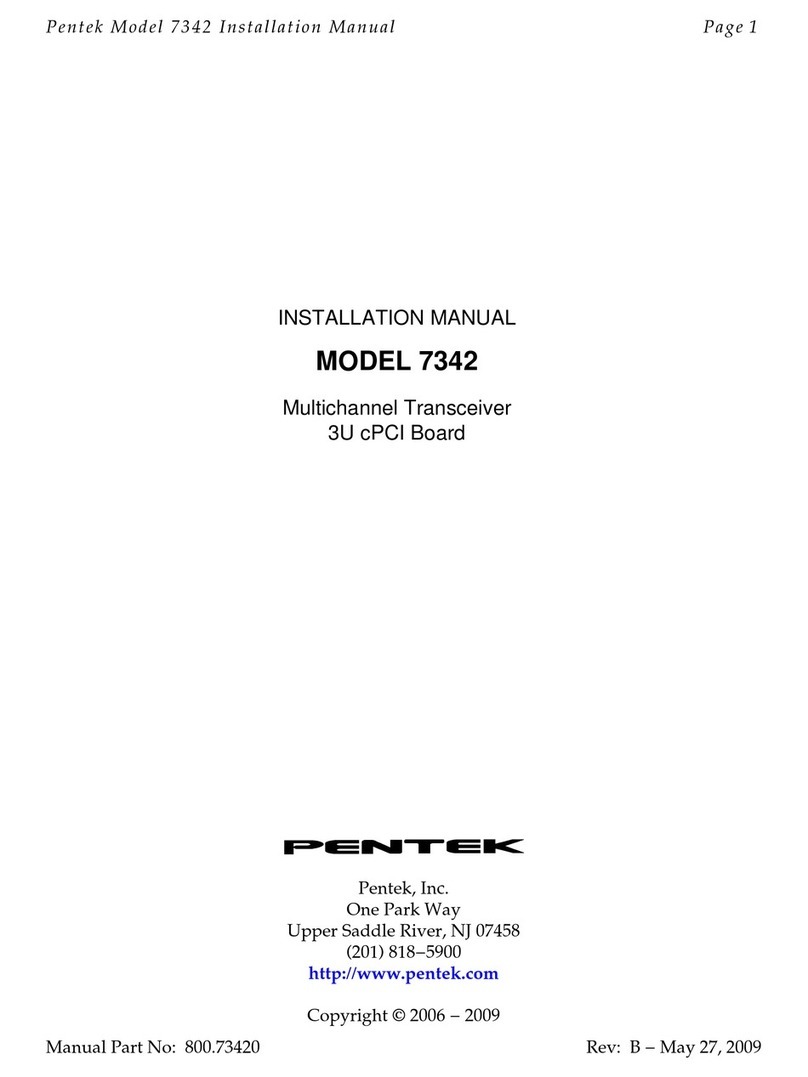
Page 4 Pentek Model 7858 Getting Started Guide
Rev. C
Introduction
This document describes the Pentek Model 7858 Dual 500−MHz A/D, 800−MHz D/A
PCI Express®(PCIe®) board, its associated software, what to consider before installa−
tion, and installation steps.
Before You Begin: Description of Hardware
Pentek’s Model 7858 is a multichannel, high−speed data converter suitable for connec−
tion to HF or IF ports of a communications system. Using the PCI Express (PCIe) half−
length card format, it includes two A/Ds and two D/A converters, dual Virtex−5
FPGAs, and two banks of DDR2 SDRAM.
The Model 7858 consists of one Pentek Model 7158 PMC/XMC module mounted on a
Pentek Model 78010 or 78011 PMC/XMC PCI Express carrier, assembled and tested as
a single board. It is ready to plug into computer boards with PCIe bus slots.
Refer to the Pentek Model 7158 Operating Manual (800.71580) for a complete description
of the 7158 hardware operation and programming.
Before You Begin: Consider the Host Bus Characteristics
When you install the Model 7858, you will need to set jumpers and switches and con−
sider installation options based on the characteristics of the host bus. Therefore, you
will need to know the bus mode of operation and bus speed (MHz). You will also need
to know whether the XMC connector (Option 5xx) will be used.
Option 5xx for the Model 7858 provides an XMC connector that complies with the
VITA 42.0 XMC Switched Mezzanine Card Auxiliary Standard. This standard provides
two 4x 2.5 GHz data links between the XMC and the baseboard. Three options are
available for the XMC reference clock:
• Option 520 provides a 156.25−MHz reference clock.
• Option 521 provides a 125−MHz reference clock.
• Option 522 provides a 100−MHz reference clock.
To preview the jumper and switch settings you’ll need to consider, refer to Chapter 2 of
the Pentek Model 7858 Installation Manual (800.78580). The PMC module jumpers control
PCI/PCI−X bus operation, XMC Lane 0 path, and FLASH memory protect. The PCIe
carrier jumpers control power sequencer enable, XMC MVMRO, SM bus enable, and
PMC ID select. The PCIe carrier switches control PMC PCI/PCI−X modes and XMC
serial data routing.





























